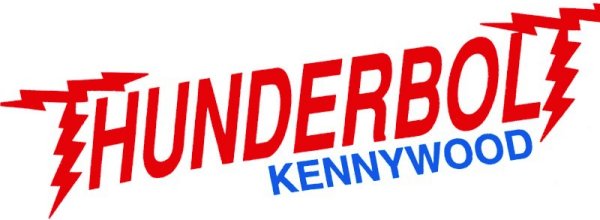Specific Type: Wooden, Terrain
|
The year 1924 brought the fifth wooden coaster to Kennywood Park of West Mifflin, Pennsylvania. It was named Pippin and it glided along a double out & back track formation featuring a succession of four major drops built into the land of a natural ravine. Designed by John Miller, the Pippin was Kennywood's second terrain coaster, proceeding the similar 1920 double out & back wooden coaster Jack Rabbit. In 1958, the rides vehicles were replaced with the sleek Century Flyers by National Amusement Devices, or NAD. These trains are still used today.
Towards the end of the 1960s, Kennywood made a unique decision: one of the park's terrain coasters would be modified to connect with a completely new track section, retaining the bulk of the old course and resulting in a much-lengthened ride. WhileJack Rabbit was a candidate for the modifications, it was Pippin that won out in the end. So, after closing for the 1967 season, Kennywood's master ride designed Andrew Vettel was given the task. Creating a new double-spiraling track section, Vettel retained the four classic ravine drops of Pippin, constructing a new station midway through the former course and connecting the two tracks. The final result was a completely unique coaster. Beginning with a duo of ravine plunges, the ride now hit the lift-hill halfway through the layout and engaged on the new knot of track, finally finishing off with Pippin's other two drops. The 'new' coaster was dubbed Thunderbolt and was received to the coaster world with flying colors, going down on top 10 wooden ride lists across the country. The ride was later mentioned in the New York Times as the best coaster in America, over other coasters like the Great American Scream Machine at Six Flags over Georgia, and the Coaster (now Thunderhawk) at Dorney Park. The park made the decision to add another coaster in 1991, which was to be built near the legendary Thunderbolt. Steel Phantom’ssecond drop was to slip under Thunderbolt’s structure and curve up into its four inversions. It was closed for a while to allow this to happen. This happened again in 2001, when Steel Phantom was changed into Phantom’s Revenge. Phantom’s Revenge was to interact more with the Thunderbolt, and more structure modifications were needed. In 1998, the Thunderbolt’s headlights were restored to celebrate Kennywood’s 100th anniversary. However, the headlights only remained on the ride for one year. The reason for removal was an accident when the brakes failed, and the train crashed into the second one in the station. The headlights were removed because the electric system did not have the power for them. After the boarding of one of two classic National Amusement Device-crafted trains, the ride immediately gets to the good stuff with a first 8-story plunge from the loading platform and under the steel tracks of the huge second drop of Phantom’s Revenge.Thunderbolt climbs back up the other side of the ravine and rounds the first 180-degree turnaround, then it's time for a second drop down back into the ravine. The train crawls back out of the depression and levels off for a brief moment before hitting the lift-hill and venturing to a 70-foot tall peak. Following a right-hand turn, the T-Bolt's wooden rails curve downwards and head 45 degrees to the bottom of the first post-lift-hill drop. Next, riders are thrown around a barely banked curve to the right leading to a turning hill and more wild curvature. This gives riders plenty of lateral g’s, when the riders are thrown to the side. The layout makes its way around a total of 560 degrees and then lets go of the speed momentarily for a quick breather crossing under another hump. With a turn to the left, it's back down into the ravine - down the third terrain drop and paralleling terrain drop number one. Climbing back up onto level ground, the Thunderbolt curves around another U-turn and prepares to take on the last and largest drop... plunging into the ravine down the final 95-foot deep descent, the ride hits its top 55 mile-per-hour speed and then makes its way back up one final time. With a final U-turn, Thunderbolt re-enters the station. |
©1998-2016 COASTER-net.com, All Rights Reserved.


